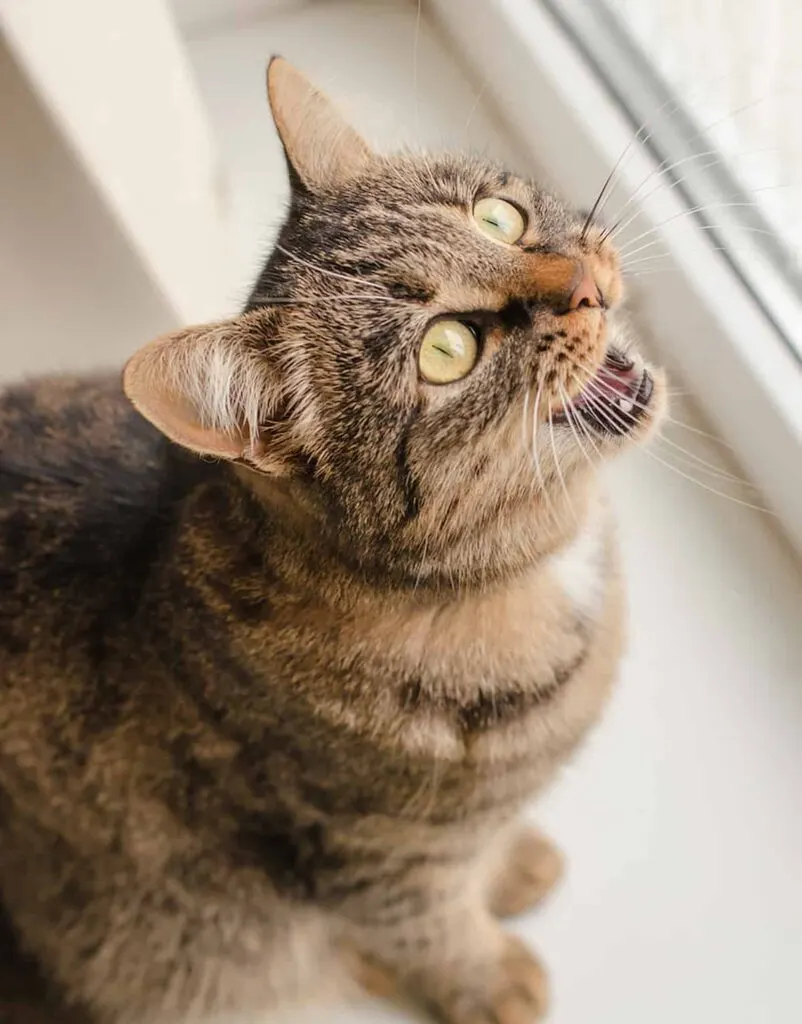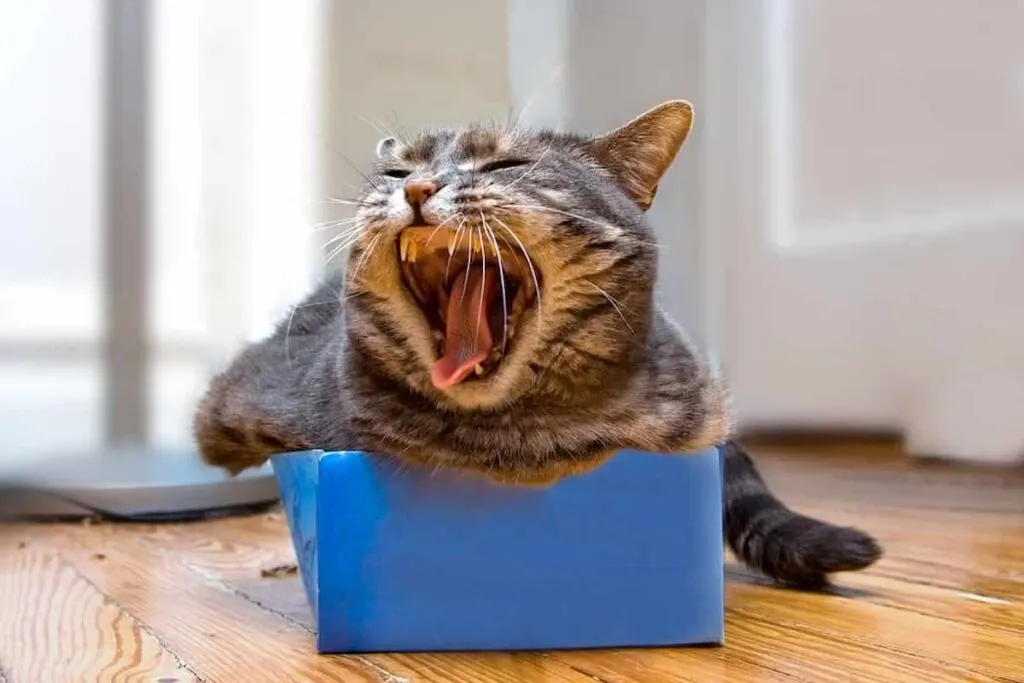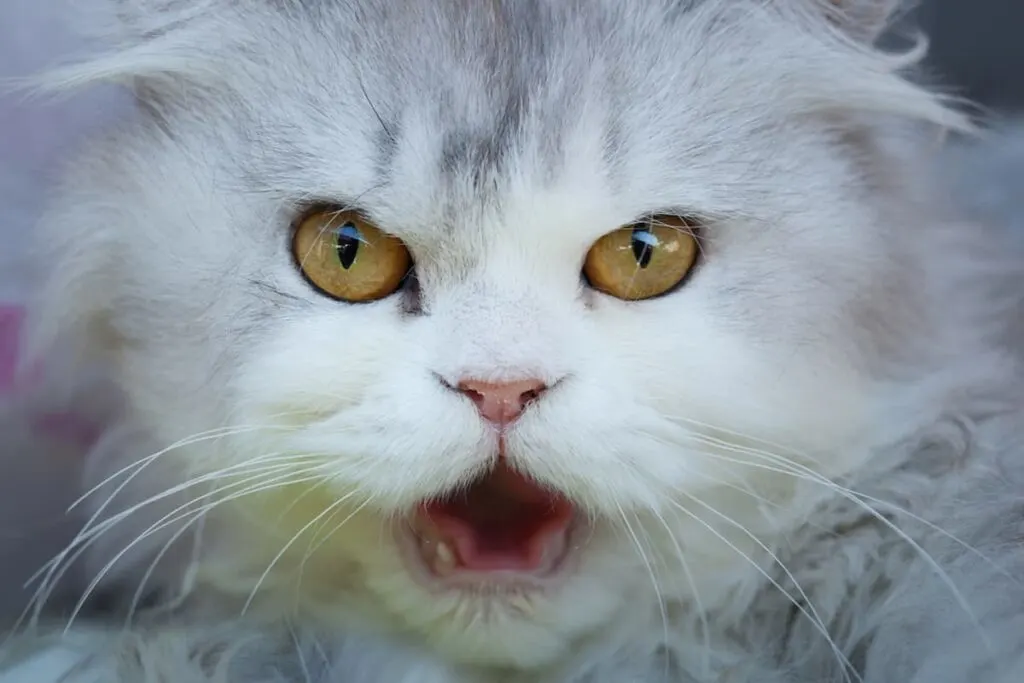Cats are renowned for speaking volumes through their meows, and understanding the meaning behind these mews is a great way to develop your connection with your furry companion. Being able to accurately decode their message will also help you better satisfy their needs.
Read on as we explore the different types of cat meows, how to interpret your cat’s body language, common misconceptions about cat meows, and other ways cats communicate besides meowing.

Basic Cat Meows
Cats employ various meows to communicate with their owners. A short, straightforward meow is often used as a way for them to say hello or get your attention. Chirps are typically utilized as an enthusiastic greeting or when they’re feeling excited about something.
Meanwhile, trills combine both a purr and meow – usually expressing joyfulness and adoration towards you!
Understanding Your Cat’s Body Language
Cats use body language to communicate, as well as meows. Here are some common body language signs that your cat may display:
- Tail position and movement: A tall, elevated tail may suggest fear or hostility, while a low-hanging tail might indicate contentment and ease.
- Ear position and movement: When a cat’s ears are erect and pointed forward, it may indicate interest or enthusiasm, while flattened ears can suggest apprehension or aggression.
- Eye contact and blinking: Long, gentle blinks showcase affection and confidence in someone, while wide-eyed stares may signal alarm or hostility.
- Whisker position: When a cat’s whiskers are laid back, it often implies contentment. Conversely, when the whiskers point ahead or quiver somewhat, this could indicate excitement or anxiety.
- Posture and movement: An arched back and bristled fur signify fear or hostility, while a relaxed body language suggests comfort.
By paying attention to your cat’s body language, you can better interpret its meows and respond accordingly.
Common Misconceptions About Cat Meows
Dispelling the myth that cats solely meow to connect with humans, felines also use this tactic to converse with their own species. Dismantling these misconceptions about cat communication can help foster a deeper understanding of your beloved feline friend!
Contrary to popular belief, cats use meowing not only as a sign of hunger but also when feeling isolated, anxious, or just plain bored.
Can You Determine a Cat’s Breed Based on Their Meow?
Although the breed of a cat may influence its meowing style, it is not always definitive. The personality and environment of a feline are also critical components to consider; for instance, Siamese cats often tend to be more vocal than other breeds with their distinctively loud meows.

Why Do Cats Make Different Meows for Different People?
Cats may make different meows for different people depending on their comfort level and familiarity with that person. For example, a cat may meow more frequently or more loudly around their owner than around a stranger.
This is often a sign of affection and trust.
If you want to hear your cat’s sweet meows more often, the solution is simple: spend quality time with them! Spend a few minutes each day engaging in activities they love or just relaxing together; this will help ease any anxieties and make them feel closer to you. Once they’re comfortable enough around you, chances are their vocalizations will increase out of pure happiness – a bonus for both of you!
Other Ways Cats Communicate
In addition to vocalizations and body language, cats also express themselves through purring. A contented cat will emit a melodious hum that is reassuring for pet owners. When they hiss or growl, however, it’s likely fear or aggression driving the behavior.
Chattering is a unique vocalization that cats make when they see prey, and kneading is a behavior that is often associated with contentment and affection.
Understanding how cats communicate can deepen your bond with your feline friend and respond to their needs more effectively.

Understanding Specific Cat Meows
Have you ever stopped to consider the numerous meow varieties cats use to communicate? Knowing these different types can aid in gauging your feline friend’s needs and emotions. Let us delve deeper into each cat-speak category for more understanding:
Greeting Meows
A greeting meow is a soft, short meow that cats use to say hello. A relaxed body posture and slow blinking often accompany it.
When my cat greets us, the meows can go on for 20 minutes until we walk over to him. It’s also the same when he wants attention after we’ve been gone a long day from work. These long, drawn-out meows signify affection and a desire for interaction.
Attention Meows
Feline companions are notorious for utilizing Attention Meows to vocally demand attention from their owners, frequently validating the request with physical actions such as pawing and rubbing. These meows typically sound louder than other types of “conversations” cats may have with humans, indicating an adamant need for extra TLC.
Hunger Meows
A hunger meow is a drawn-out meow with a pleading tone that cats use to indicate hunger. It may become more insistent or loud as time goes on.
These are usually the worst kind of meows because it usually only happens when neglecting a cat’s eating habits. The more in tune you are with your cat’s feeding requirements, the less often these meows will occur.
Distress Meows
Cats will often let out an urgent, high-pitched meow to show that something is wrong and they are in pain or distress. This ‘distress meow’ may also be accompanied by subtle signs of unease, such as running around nervously or hiding away from people.
Distress meows are some of the tougher ones to monitor because cats are great about hiding injuries. And, when you aim to look at your cat’s injured area, it can get aggressive.
Territorial Meows
When a cat is protecting its turf, it may emit a deep meow that alerts other cats of their presence. This vocalization can be paired with hissing and growling as additional signs of aggression.
If you’ve introduced a new cat to the family, territorial meows are expected when they first meet. It’s best to keep an eye on these interactions and have a safe space where the cats can retreat if things get too aggressive.
Mating Meows
Cats are notorious for the unmistakable sounds they make during mating. A specific type of meow, which is long and loud, serves to entice a potential partner. This may be accompanied by other indicators of amorousness, such as rubbing against objects or rolling around on the ground.
Play Meows
Cats use a unique “play meow” – short, melodic chirps that signify how ecstatic they are to be playing. These delightful sounds often coincide with playful behaviors like pouncing or chasing.
By paying attention to the tone, pitch, and duration of your cat’s meows and their body language, you can better interpret what they are trying to tell you and respond accordingly.
The Takeaway
Ultimately, responsible cat owners must be aware of their feline’s meows and body language. Identifying the different types of vocalizations and postures your pet exhibits will help you decipher what they are conveying to you, permitting you to react appropriately.
Knowing your cat is essential for a happy and healthy relationship. Every feline has its personality, so understanding their communication style will help create an even stronger connection with them. Spend time observing how they meow, purr, or express themselves through body language – this insightful knowledge allows you to provide the care that best suits each kitty’s needs and desires!

My name is James, and welcome to FAQCats!
Along with our team of cat owners, expert pet enthusiasts, and pet professionals, we aim to write engaging helpful, engaging content about cats. At FAQCats we strive to provide content that’s accurate and fun to read. Our team writes about everything related to cats; even the most complex of topics. Through extensive research and caring for our own fur-pals, we’re able to provide something cat owners worldwide will love. Have a look around, and leave us feedback anytime!

